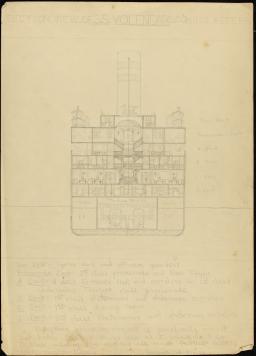
These pieces show in intimate detail both Morse’s “curiosity . . . as a boy wanting to know what [ocean liners] were like” and the seriousness with which he pursued his passion in later life.
In his teens, Morse executed a number of fine pencil drawings of ships [A, B, E] and at least one painting [F]. His most ambitious project was the invention of the “Morse Line,” for which he drew a folder modeled on Jones’s patented folder [102-106].
In the 1980s, Morse planned to donate his collection to the free-floating Ocean Liner Museum [C], which in 1980 had mounted a major exhibit, including items loaned by Morse, at the Smithsonian’s Cooper-Hewitt Museum of National Design. When it became clear that the institution would never find a permanent home—it disbanded in 2002—Morse was urged to keep his collection whole for posterity [D].
We are glad to have seen it done.







